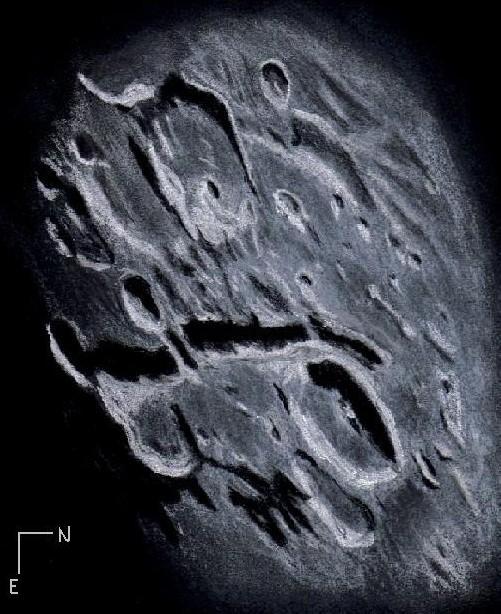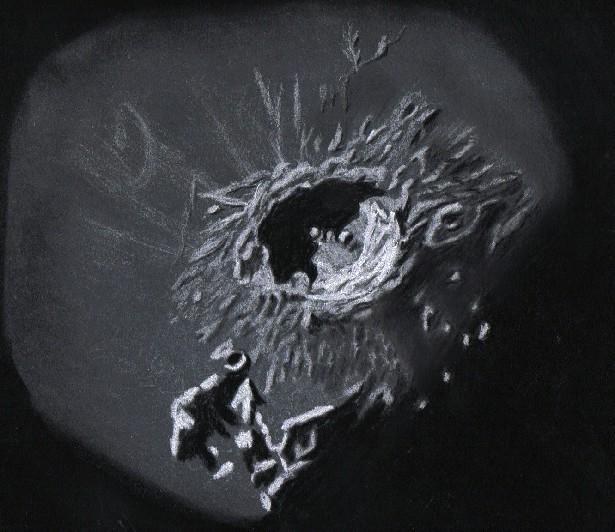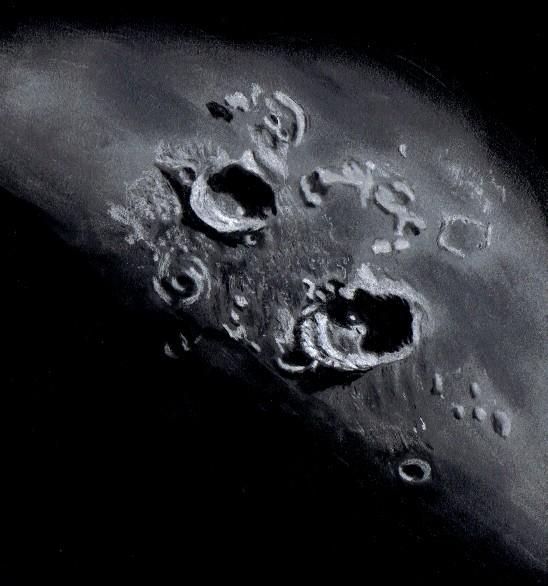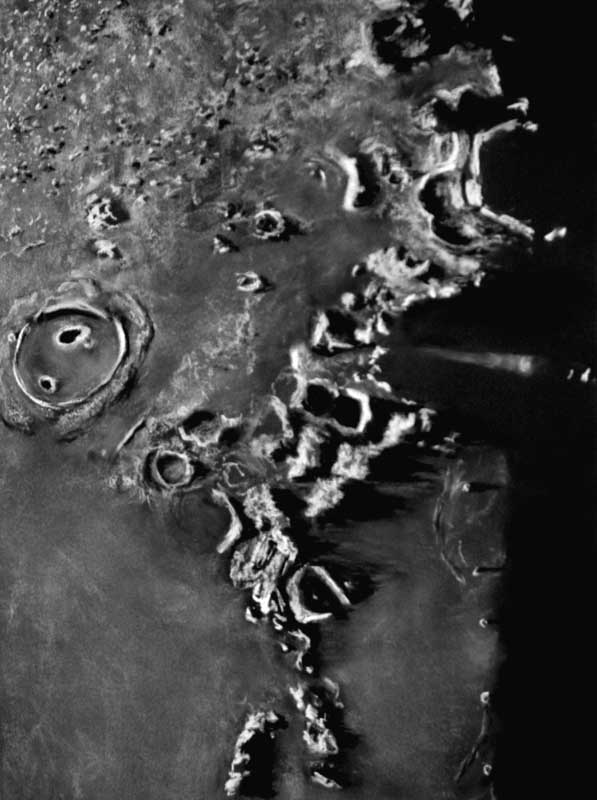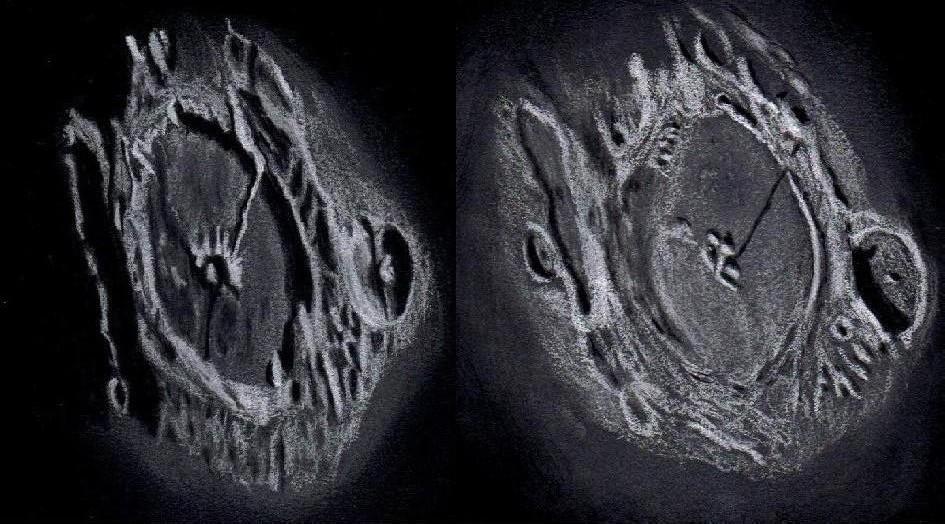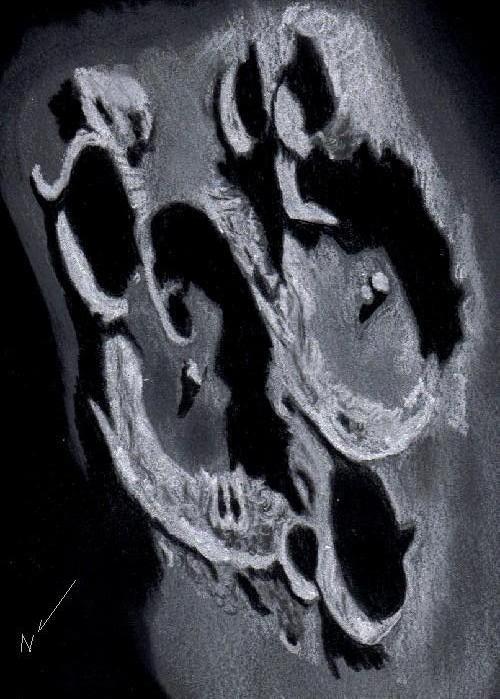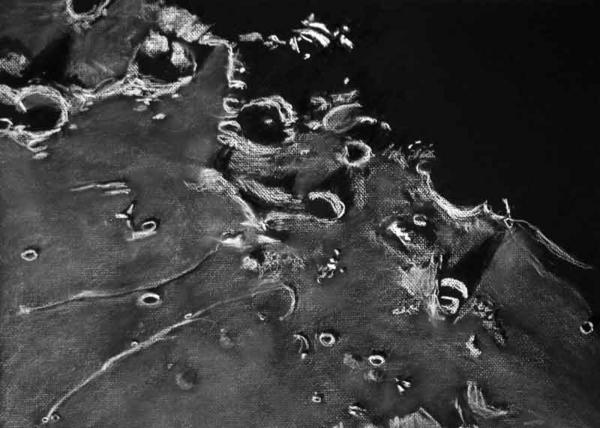
Rima and Rupes Cauchy
By Rich Handy
Scanning the area to the west of the famous hyperbola shaped rille and rupes pair, I was pleasantly surprised to see each extending further in that direction (Rupes and Rima Cauchy become faint rilles) and passing by some of the most interesting pyroclastic deposits, lunar domes and cinder cones I’ve ever seen on the lunar surface. Each extend further in the eastern direction as well. Unfortunately I’d need two large sheets to sketch this area in the kind of detail it deserves, so I settled for this somewhat smaller vista. Check out Chuck Wood’s “The Modern Moon” page 88 and 89 for an excellent overview of this exciting area and Rukl Atlas Plates 36 and 37 for a detailed view of this amazing area. Rima Cauchy is just to the north of Cauchy, a 14 km, bowl shaped Copernican era crater that sits amidst the eastern Sea of Tranquility and pretty close to Sinus Concordiae, the mare area that tapers off to the north. To the south is Rupes Cauchy, its wall brightly lit in the the last rays of the late lunar afternoon. Immediately to the south of the Rupes were the two domes, Cauchy Tau to the west (right) and Cauchy Omega to the east. I noted the central peak on Omega with no problem, a testament to the kind of seeing I was blessed with last night. Though I couldn’t say with absolute certainty, there seemed to be two “Arago-like” domes below 12 km Eratosthenian aged Zahringer near the smaller 11 km Taruntius F.
Next time you are observing this area, take some time to visit this rare fault and rille and it’s terribly interesting environment. It may sound like hyperbola, but I’m not exaggerating, this place is lunie dreamland!
Here are the sketch details:
Subject: Rima and Rupes Cauchy and environs Rukl: 36,37
Date: 9-10/11-06 Started: 6:40 UT End: 8:24 UT
Seeing: Antoniadi I-II Weather: Clear most of session then fog late.
Telescope: 12″ Meade SCT F10
Binoviewer: W.O. Bino-P with 1.6X Nosepiece.
Eyepieces: W.O. WA 20mm Plossls
Magnification: 244X
Lunation: 18.48 days Phase: 311.1 deg Illumination: 82.9%
Colongitude: 133.7 deg Lib in Lat.: -3 deg 53 min Lib in Long.: +5 deg 12 min
Sketch medium: White and black Conte’ Crayons on black textured Strathmore paper.
Sketch size: 18″ x 24″






